In the rapidly evolving world of digital marketing, staying ahead of the curve requires constant learning and adaptation. One tool that has been making waves in recent times is Google's Performance Max. This innovative ad solution uses Google’s machine-learning capabilities to optimize your campaigns across all Google platforms.
However, to fully leverage its potential, it's essential to understand the best practices for using Performance Max. That's why we've created this comprehensive checklist — to guide you through the process, step by step.
From feed optimization to specific setup steps. Whether you're a seasoned marketer or a beginner just starting out, this checklist with Google Ads Performance Max best practices will serve as a valuable resource to help you maximize your ROI with Performance Max. So, let's get started!
Tracking your PMax results
No matter what kind of Google campaign you're running, it's always important to keep an eye on conversions. But with Performance Max, it becomes even more crucial because the system handles a lot of the work by itself, and you have less control over the quality of leads and sources of traffic.
Certain important reports that are available in Google Ads in general are not yet accessible in Performance Max. Specifically, you cannot access landing page reports or precise geographic reports. Still, there are some workarounds you can use to create custom reports in Google Ads.
If you need additional reports beyond what Performance Max offers, you can utilize Google Analytics. By creating a user segment for the specific campaign within Google Analytics, you can gain access to more advanced insights into user behavior.
For instance, you can create a segment within the Landing Page Report to determine where Performance Max is driving users and make informed decisions about whether to enable URL expansion.
In general, to make the most of Performance Max, you should consider using tools like Google Analytics, CRM systems, enhanced conversions, or offline conversion tracking.
1. Don’t neglect feed optimization with PMax
Neglecting to optimize your data feed could potentially lead to the downfall of your campaign. So, don't ignore feed optimization with PMax - it's a fundamental step towards achieving optimal performance with Performance Max (PMax).
The information in your data feed powers your Google Shopping (also in PMax). It's like the foundation that makes your ads work well. So, it's really crucial that the information in your data feed is both correct and attractive
There are three important things that really matter for your campaigns to do well: understanding how Google's algorithm works, gathering compelling product data, and being in full control of your data feed. These factors play a big role in making your campaigns successful. These are also Performance Max campaigns best practices.
Below are some key product details that require your attention. These three are crucial for Google to understand your product:
- Brand name: It helps Google identify your product's brand.
- MPN or SKU (Manufacturer part number): This unique identifier assists in product identification.
- GTIN (UPC code): It's a barcode that provides product information.
Optimization-wise, you should also focus on:
- Rich product titles: Clear and informative titles that accurately describe your product.
- Google category: Properly categorizing your product in Google's taxonomy.
- Product type: Identifying the specific type or category your product belongs to.
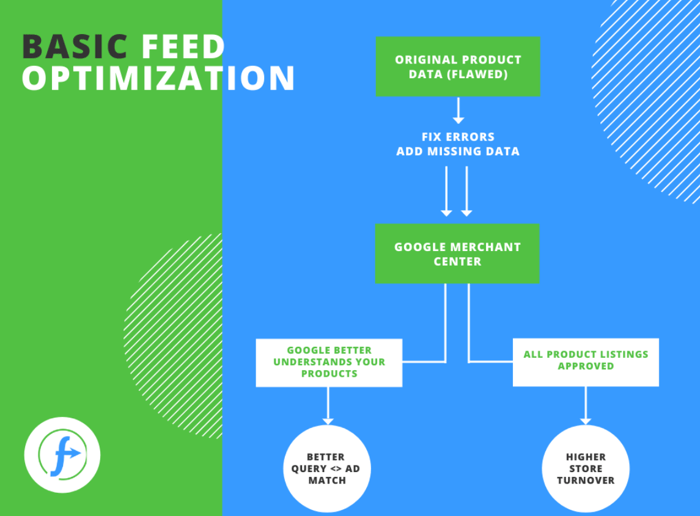
Moreover, clever manipulation of the data included in your feed gives you more options to control your campaigns. It allows you to customize your PMax targeting and messages in a way that has a powerful impact, giving you greater flexibility.
When it comes to optimizing your product data, there are three primary focus areas:
- Ensuring Data Accuracy:
Ensure that the product data in your feed is accurate and approved by Google. Resolving potential data errors can significantly enhance your PMax campaigns' potential.
- Optimizing Data Feed Attributes:
Optimizing your data feed attributes is vital as it impacts your campaign structure and provides context to Google and shoppers. With optimized data, Google knows when to show your product ads, and potential customers can easily find your products and decide whether to click.
Example: Rearranging your product titles to include the most important info first or using additional_image_link to add more images.
- Implementing Strategic Feed Management Tactics:
Certain feed tactics can give you more control over ROI. For instance, excluding unprofitable products from your Performance Max campaign or creating profit-based custom labels can help you maintain better control over ROAS.
Here are 9 tactics on how to optimize your Performance Max product feed the right way.
2. Understand the commitment needed with PMax
Performance Max (PMax) campaigns are fully automated and rely heavily on data input and machine learning. In order to get results, it's vital that you provide this campaign with the resources it needs.
- Budget appropriately
Plan to allocate a daily budget of approximately $50-100 for at least a month. This ensures that the PMax campaigns have a good base of data to work with and learn from.
- It’s a marathon, not a sprint
Keep in mind that Google recommends a six-week period, at the very least, for the machine learning algorithm to fully operate and gather sufficient data for performance comparison. Over this period, the system analyzes various aspects such as ad reception, click-through rates, conversion rates, and more. This extended time frame allows to detect patterns, adapt strategies, and optimize your ads for maximum engagement and conversion.
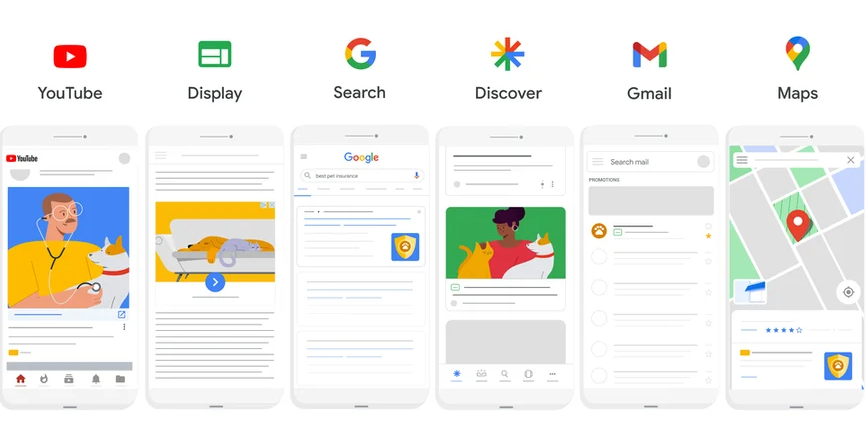
Google Machine Learning | Google
- Go the extra mile with data
Remember, the more data you provide to the system, the better it can predict user behavior and tailor your ads to meet those expectations. Therefore, investing a significant budget and allocating sufficient time to PMax campaigns is not just an option - it's a Google Ads Performance Max best practice.
3. Use Performance Max in conjunction with other campaign types
Performance Max should be used as a supplement to your existing search campaigns. When a search query from your potential customer is a perfect match for a keyword you're actively bidding on, the ad from your ongoing Search campaign will be displayed. On the other hand, if the search query doesn't exactly match your keyword, Google will choose between serving the ad from the Search campaign or the Performance Max campaign.
The deciding factor here is the Ad Rank score - the ad with the highest score gets the spotlight. This strategy of combining Search with PMax not only maximizes your visibility but also ensures that the most relevant ad reaches your potential customers, regardless of the specificity of their search query.
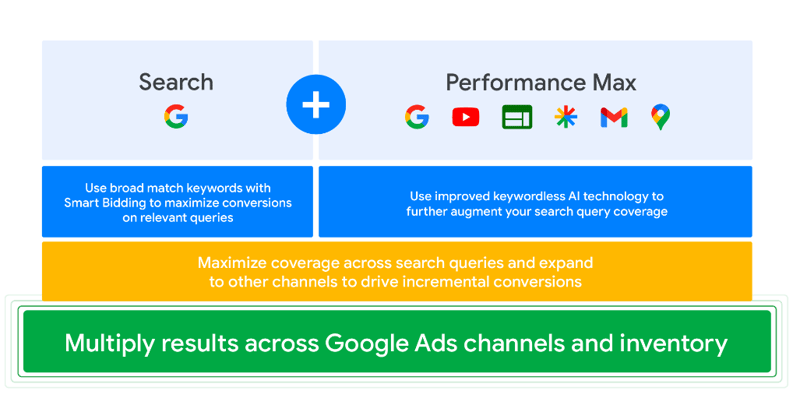
Using Search and Performance Max together | Google
4. Avoid using branded keywords in Performance Max
While it might appear counterintuitive, excluding branded search terms from your PMax campaigns is a crucial step to ensure data accuracy (not to get inflated results). Including such terms could lead Google to overestimate the campaign's performance. This is because users specifically seeking out your brand are more likely to convert than those using non-branded search terms. Therefore, by excluding branded keywords, you can gain a more authentic understanding of your PMax campaign's effectiveness.
It's important to note that branded terms typically perform best and will be favored by Performance Max. However, this does not necessarily bring marketing value or attract new customers. It merely reflects the already high conversion rates associated with these terms.

To effectively capture branded search terms without distorting your PMax campaign's performance data, consider running an additional standard shopping campaign. This strategy ensures you reach individuals actively searching for your brand without artificially inflating your PMax campaign's success metrics.
Moreover, while you should bid on your branded terms in other campaigns to prevent competitors from dominating, doing so within Performance Max would be a strategic error due to differing Return on Ad Spend (ROAS) requirements.
Unfortunately, Performance Max doesn't allow manual exclusion of any terms, including branded ones. To set up these exclusions, you'll need to create a negative keyword list and contact Google representatives for help adding it to your PMax campaign.
5. Develop Efficient PMax Asset Groups
When strategizing your campaign, it’s important to identify and categorize your various target groups. These target groups will influence your creative approach, including the visuals, titles, and more.
As you build a Performance Max campaign, you'll incorporate all your assets into an asset group. An asset group consists of different creative elements that are used to create an ad, the shape of which depends on the channel in which it will be displayed. It's advisable to arrange asset groups according to a consistent theme, much like how you would organize your ad groups.
After the campaign is set up, you have the flexibility to include more asset groups. Arrange them in a manner that aligns with your business needs, which could entail categorizing them based on the different products or services that your company provides.
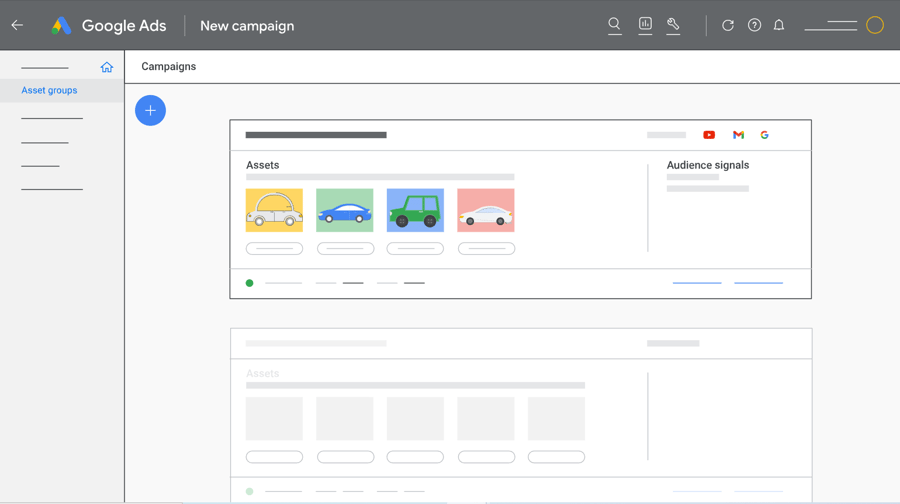
Creating asset groups | Google Ads
Differentiating your PMax asset groups within a campaign holds several advantages. These include: setting up specific Return on Ad Spend (ROAS) by product category, streamlining organization by product type, and managing budgets for large product groups.
Once you've defined your target audiences and structured your PMax asset groups, you can proceed to develop tailored audience assets and decide which products to target. Effective asset grouping is crucial to reaching the right audience with the right message, thus enhancing the overall effectiveness of your campaign.
6. Add as many relevant assets as you can and keep on optimizing
Another one of Google performance max best practices is very simple. Performance Max campaigns thrive on the quantity and quality of assets you provide. The more relevant assets you add, the higher the likelihood of your ad being eligible to serve everywhere across Google networks.
Optimizing creative assets is crucial for maximizing the effectiveness of PMax campaigns. To fully leverage their potential, it's vital to have engaging and pertinent ad creatives that resonate with the audience signals provided by your asset group. Effective creatives should be visually appealing, clearly convey your product or service, and include a compelling call to action button.
Testing various creative elements, such as ad headlines, images, and descriptions, can help identify what connects best with your audience. PMax provides performance rankings for each asset: Low, Good, and Best. Until enough data is available, an asset's default status is “Pending.” It's recommended to use these signals to replace underperforming assets and test new creatives.
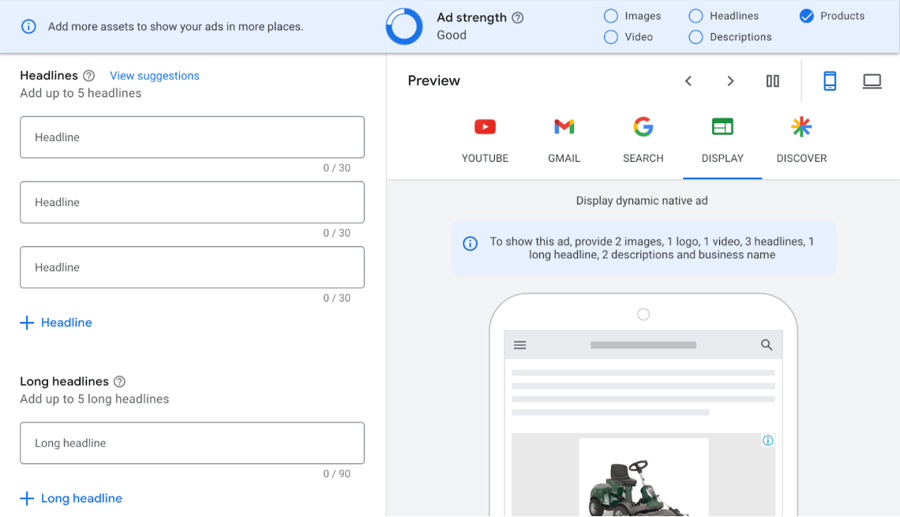
Adding assets to Performance Max | Google Ads
Google auto-generates video content from the provided headlines, descriptions, and images. While these videos often appear low-quality and may not align with your company's branding, there's no opt-out option. Therefore, it's highly recommended to upload a general branded video lasting 10-15 seconds to every asset group.
Regularly reviewing and optimizing your creative assets can ensure your ads achieve the desired performance, thus maximizing the return on your advertising budget. Remember, the key to a successful PMax campaign lies in the continuous improvement and adaptation of your assets.
Important!
For those who wish to show exclusively on Google Shopping ad inventory, it's advisable not to add any assets and instead utilize your feed. In this scenario, your campaign will deliver Shopping ads, along with Display and YouTube ads, all in Shopping format.
Performance Max asset requirements
To maximize performance and achieve optimal results, understanding the Performance Max asset requirements is crucial. Marketers and digital retailers need to identify the key assets that contribute to their success. Whether it is the headlines, images, or call-to-action buttons, each asset plays a crucial role in enhancing performance.
To run a Performance Max campaign, you must use a minimum set of assets. These assets can be obtained by either submitting entirely new ones or utilizing existing assets from other campaigns.
The most important Performance Max specs refer to:
- TEXT (headline, long_headline, description, business_name)
- IMAGE (marketing_image, square_marketing_image, portrait_marketing_image, logo, landscape_logo)
- YOUTUBE_VIDEO
- CALL_TO_ACTION
- MEDIA_BUNDLE
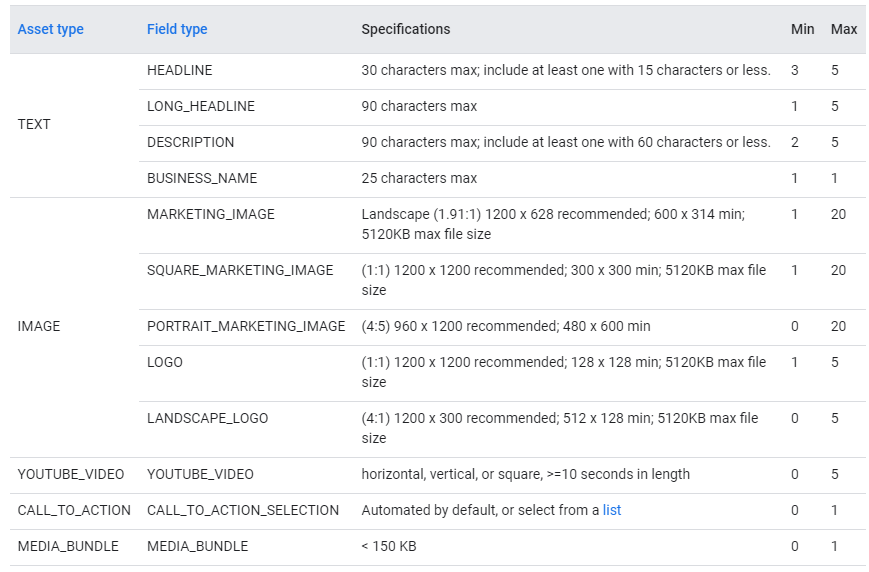
Google Performance Max specs | Google
7. Experiment with feed-only vs all assets campaign configuration
As per Google's guidelines, it's beneficial to include all possible assets in each PMax campaign, enabling your ads to be displayed across all Google networks. This strategy in theory, enhances your reach to potential customers and improves conversion rates.
However, if you want to focus solely on Google Shopping, you can design a Performance Max campaign without any additional assets. In this scenario, Google retrieves all necessary product information from the data feed you've submitted via the Google Merchant Center without incorporating any creative elements or assets. Consequently, your campaigns are limited to the Shopping channel of Google Ads inventory, excluding other platforms like YouTube and Display.
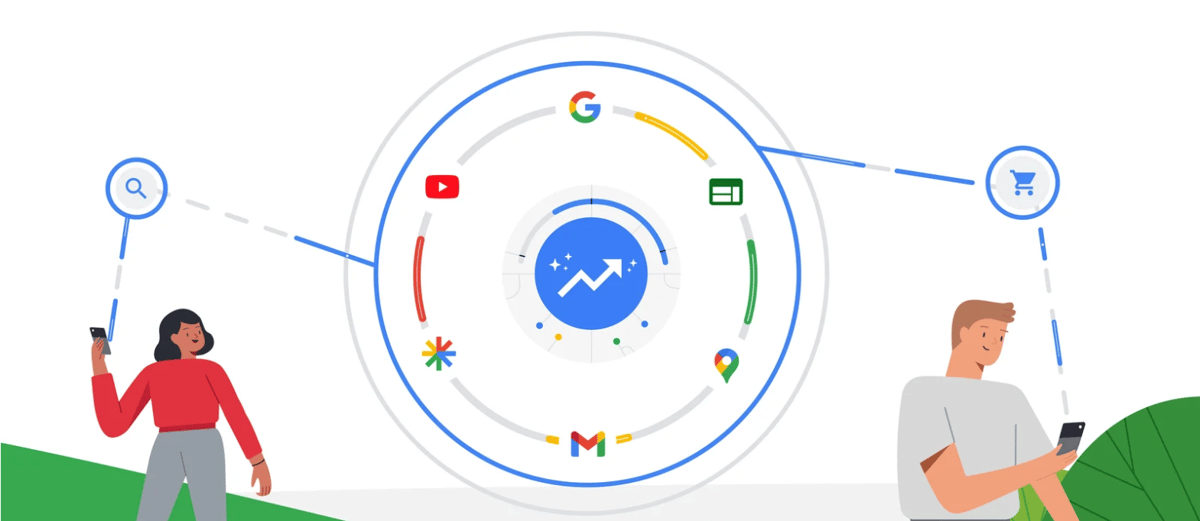
Feed-Only or all assets PMax?
Running many PMax campaigns at once is about trying different things. Since PMax campaigns are pretty new, there's no one-size-fits-all strategy to win with them yet.
It's important to keep an eye on how each campaign is doing and change your plan based on what you see. Some advertisers mainly look at ROAS (Return on Ad Spend) and conversions to make decisions. But, we suggest you also check how each product is doing in Google Analytics.
You should look at things like how many searches your product gets and how often people click on your ads. Using this information, you can come up with some good plans for your Performance Max campaigns. This might mean deciding when to use a campaign that only uses product feed or one that uses all assets. Sometimes, the best approach might be to use both types at once.
Regardless of the campaign type, the quality of product feeds is critical as it directly impacts your ad performance on the Shopping channel. Running an all-assets campaign potentially allows for success across various channels, not just Shopping. Conversely, if you opt for a channel-only PMax campaign, the optimized data feed will become the most important, as Shopping will be the only channel displaying your ads, and therefore the outcome of the entire campaign depends on it.
Read about which PMax strategy to choose in our other article.
UPDATE
Google recently (August 2023) made a significant update that could potentially transform Performance Max for advertisers running feed-only campaigns. This update, while quietly announced, brings an important change that you should be aware of.
Previously, if you chose to run a feed-only campaign without including any assets, Performance Max would automatically allocate your entire budget exclusively to the Shopping network. This was the only placement where your ads were displayed, and for many advertisers this was the goal they wanted to achieve.
However, this will apparently change with the latest update. Google will now be able to display auto-generated ads on platforms such as YouTube and even Display, using images directly from the product feed.
Automatically generated ads often don't meet advertisers' standards, so it's important to take appropriate action. It also becomes very important to include highly optimized images in your feed.
Read more what your next steps should be when running PMax feed-only campaign.
8. Be aware of Performance Max image specs
In Performance Max campaigns, images hold significant importance, as they visually convey the essence of your marketing message. Be sure to add as many images as possible to your PMax campaigns!
In addition, understanding and adhering to image specifications is key to ensuring optimal performance and engagement.
Performance Max image requirements
The recommended resolution for the marketing_image is 1200 x 628, although a minimum resolution of 600 x 314 is acceptable. It should be in landscape orientation with an aspect ratio of 1.91:1. You have the flexibility to submit between 1 and 20 marketing_images.
Additionally, it is mandatory to include at least one square_marketing_image, with a recommended resolution of 1200 x 1200 (minimum 300 x 300). You can provide up to 20 square_marketing_images to enhance the diversity of your campaign. Furthermore, a logo with a 1:1 aspect ratio and a recommended resolution of 1200 x 1200 (minimum 128 x 128) is required. You have the option to include up to 5 logos to reinforce your brand identity.
For optional images, you can incorporate portrait_marketing_images, with a recommended resolution of 960 x 1200 (minimum 480 x 600) and an aspect ratio of 4:5. You can include up to 20 of these images to further diversify your campaign. Additionally, landskape_logo, with a recommended resolution of 1200 x 300 (minimum 512 x 128) and an aspect ratio of 4:1, can be added up to 5 times to complement your branding.
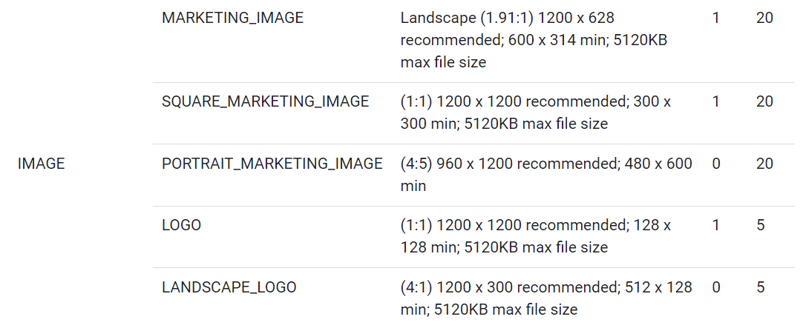
Performance Max image specs | Google
Performance Max image text
With Google Ads, your ads have the potential to appear alongside videos or other content that users are actively consuming. By incorporating text within your images, you significantly enhance the probability of capturing and holding the attention of your target audience.
Therefore,it is strongly advisable to include text or copy within your ads to optimize their effectiveness.
By following Performance max image best practices: adhering to these image specifications, adding text to images where possible, and using a variety of image formats, you can optimize the visual impact of your PMax campaign and possibly get better results from it.
9. Fine-tune your audience signals
Audience Signals enable you to pinpoint audiences that have the highest likelihood of converting to online sales or leads. This helps the PMax algorithm gain a better understanding of your customer base and customize your advertisements to suit their preferences.
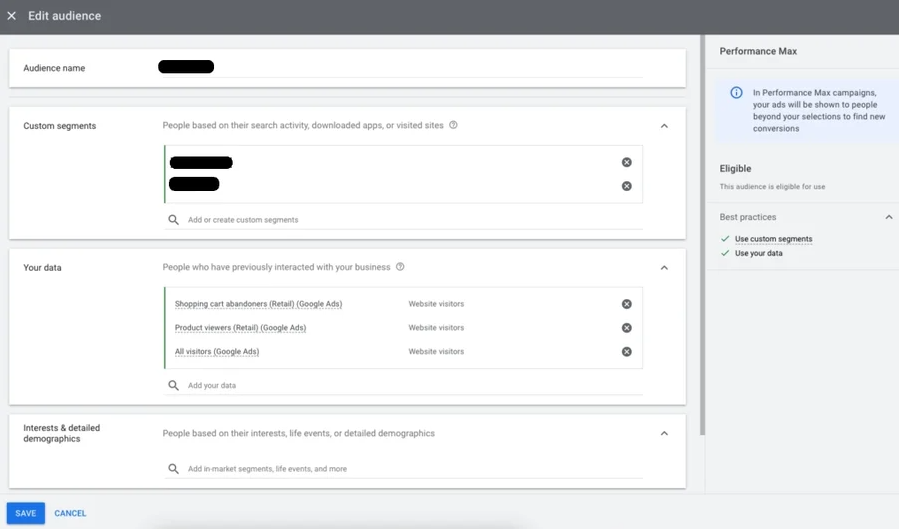
Creating an audience signal | Google Ads
To maximize the effectiveness of your audience signals, it's recommended to rely more on your actual first-party business data. Information gathered directly from your users is incredibly valuable for audience signals because it provides Google with insights about those who are already using and benefiting from your product or service. This enables Google to concentrate on locating more similar audiences.
In general, you can enhance your campaign by incorporating the following signals:
- Existing customer lists
- Custom segments, which are created based on various factors such as the keywords individuals use in their searches, the websites they frequent, and more.
- Remarketing lists, which encompass individuals who have interacted with your website, engaged with your YouTube channel, shared their contact information, among other actions.
- Interests, which could involve in-market segments, significant life events, affinity groups, and more.
- Demographics that cover aspects like age, gender, parenthood status, and more.
Performance Max best practices:
Customer lists should be your primary choice if you have sufficient customer data (New customers, repeat customers, customers with high conversion values etc.). On the other hand, customer intent audiences enhance Google’s interests by incorporating relevant keywords, providing a more targeted approach. Website visitor audiences also present a viable option, especially when using customer lists isn't feasible.
10. Opt for the most suitable bidding strategy
When initiating a new Performance Max campaign, your bidding strategy is crucial and you have two primary choices:
- Maximize Conversions: This strategy aims to achieve the maximum number of conversions within the constraints of your budget.
- Maximize Conversion Value: This approach aims to secure the highest value conversions. Although this might result in fewer conversions, the goal is that each conversion will be more valuable.
While it's possible to use Target CPA or Target ROAS right from the start, it's generally recommended to first gather substantial conversion data when launching a new campaign. This way, you'll have a solid foundation of information to inform your bidding strategy and you'll be better equipped to optimize your campaign's performance.
Setting up bidding strategy for PMax | Google Ads
After your campaign has accumulated enough conversion data, you can start experimenting with advanced strategies such as 'Maximize Conversions with Target CPA (Cost per Acquisition)' or 'Maximize Conversion Value with Target ROAS (Return on Ad Spend)'. These strategies can help elevate your campaign's performance.
11. Take advantage of ad extensions
Ad extensions enrich your ads, making them more captivating by providing additional, relevant details about your products beneath your ad. These extensions can include locations, extra links, pricing, contact numbers, and more. While there are 14 ad extensions in total—including reviews, locations, calls, pricing, promotions, and more—the following are particularly worth considering:
- Sitelinks: These direct users to specific pages on a website. For instance, you could highlight relevant product categories, send users to a pricing page, and more. There are numerous options, and they significantly impact your ad's visual appeal and increase your click-through rate by using at least the recommended by Google minimum of four sitelinks.
- Location Extensions: These display the business's location to users.
- Call Extensions: These showcase your phone number or a call button alongside your ad
- Structured Snippets: These are used to spotlight specific products, services, or features in a list format. For instance, a bookstore might use a Product Structured Snippet to showcase various genres like mystery novels, biographies, children's books, classic literature, science fiction, and cookbooks.
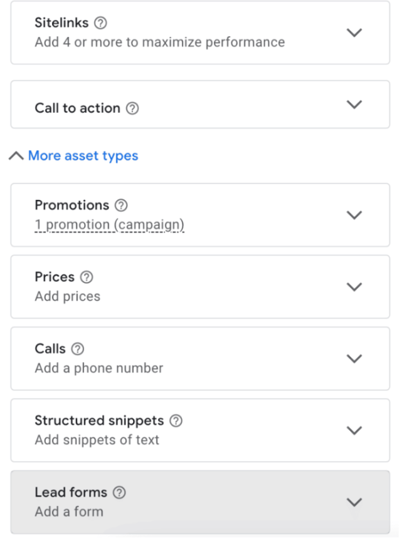
Adding ad extensions (assets) to PMax campaign | Google Ads
To set these up, navigate to the Extensions page in your Performance Max campaign. Here, you'll find suggested ad extensions related to your selected goals and more details about specific extensions. In Performance Max campaigns, ad extensions are tied to particular objectives.
Implementing various ad extensions is a best practice for Performance Max and can boost your ad's visibility and engagement levels, as well as improve its quality score.
12. Use product & campaign exclusions for PMax optimization
One effective strategy to enhance your Performance Max (PMax) campaigns is to take advantage of campaign exclusions. This approach helps cut unnecessary spending and boosts the efficiency of your campaigns.
By incorporating exclusions, you can refine your PMax campaigns to be more targeted and efficient. Remember, the goal is to make every ad count by reaching the most relevant audience.
Here are some exclusion techniques to consider:
Excluding specific products:
The largest percentage of products that online retailers tend to lose money on are typically products that are unavailable for purchase. These items should be your first consideration for catalog exclusions.
Furthermore, consider excluding product variations that show up for the same search query, products that are unprofitable or have low margins, and products with a low conversion rate.
You can make these and more exclusions by using Listing Groups to remove these products based on Brand, Product ID, Category or Custom Labels.

Excluding unprofitable products | DataFeedWatch
Find more ways of excluding products in our article: 7 Ways to Exclude Products From Your Data Feed
Campaign exclusions:
Campaign exclusions not only improve your campaign performance but also reduce the number of products Google has to process through the learning phase. This reduces the time it takes to actually kick off a campaign.
Exclude specific keywords
Implement negative keywords to avoid wasting your budget on irrelevant searches. This ensures that your ads are displayed to users who are most likely to be interested in your products or services, improving the effectiveness of your campaign.
Exclude your existing customers
You can choose to exclude existing customers so your PMax campaign primarily targets new customer acquisition. During the campaign set-up, simply select the option Only bid for new customers. This helps you focus your resources on expanding your customer base.
FAQ: What are the best practices to follow when creating a Performance Max campaign?
Follow these best practices for your PMax campaigns in order to achieve optimal results.
How should you structure a Performance Max campaign?
First, you should make sure that your product data is fully optimized in order to give Google the best idea of who to show your ads to and when.
- Decide on your daily budget
It’s recommended to spend at least $50-$100 daily and that your average daily budget is 3x your CPA. - Decide on using feed only vs. all assets
Explore both of these options deeper in our article: Google PMax Campaigns: Feed-only vs All Assets - Have enough conversion data
The recommendation is at least 30 conversions a day. Consider setting up conversion tracking so you can give Google even more data to better place your ads. - Keep brand and generic searches separate
How many Performance Max campaigns should I have?
You will most likely want to run more than one campaign in order to have more control. When using just one campaign you won’t be able to decide which products to show because they will all be grouped together. Instead you can use multiple campaigns to divide your products into buckets.
What are the requirements for a Performance Max campaign?
In order to get your Performance Max campaign up and running, you will need:
- A Merchant Center account that is set up with the required details.
- To link your Google Ads and Merchant Center accounts.
- A product feed with all product data (you can use the same feed as for your Shopping campaigns):
- Titles
- Brand
- Price
- Images
- MPN/ SKU
- Product_Category
- Product_type
- Custom Labels
Summary
PMax is still a fairly new form of advertising campaign. By reviewing each item on the checklist, you can ensure that you have covered most of the essential aspects necessary for success.
However, the journey toward effective advertising strategies is an ongoing one, and we encourage you to share your own practices and thoughts. By exchanging insights and experiences, we can collectively enhance our understanding and implementation of Performance Max best practices. Let’s do it!
Read also how to use Search Themes in Performance Max.
